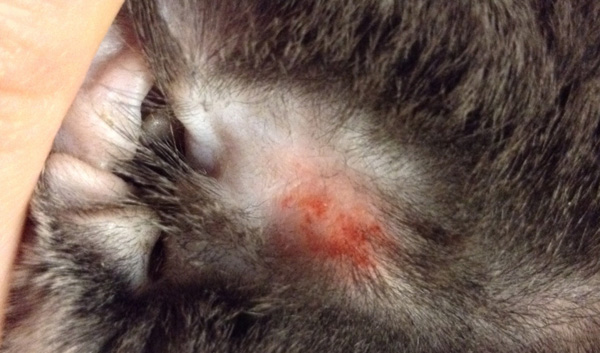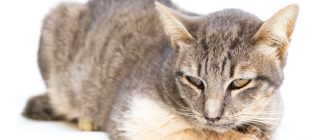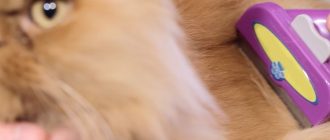Microsporia in common people is called lichen and is called Microsporum pathogenic fungi, spores of which are extremely resistant to environmental influences. The fungus is inside the affected hairs of the animal’s hair, affecting the skin of the cat, wool, sometimes claws. In addition, such a disease is dangerous to humans and other animals (especially if the body weakened) in contact with a sick cat or objects in which it may be her coat and skin flakes with affected skin plots. The incubation period of the disease can be prolonged in cats long enough, but approximately equal to 3 to 6 weeks.
In cats, there are 4 forms of microsporia:
Contents
- Hidden (when the disease is almost imperceptible, foci sometimes not expressed at all);
- Erased (the animal has small hairless areas skin);
- Superficial (on the skin there is a slight inflammation, coat may fall out, forming small and few bald spots);
- Follicular (large area of baldness, skin on the affected areas covered with crusts, very sore, can fester).
Photo microsporia in cats:
 See also: photo Maine Coon
See also: photo Maine Coon
Symptoms of Microsporia in Cats
General symptoms, depending on the form of the ongoing disease, usually are as follows:
- Deterioration of the cat’s appearance (dull hair, the appearance of dandruff, dry skin, brittle coat);
- The appearance of a gray coating on wool;
- Restless behavior of an animal (a cat scratches every now and then affected skin areas);
- The formation of round and oval sections with broken or missing hairs (most often foci are located on the muzzle, paws, tail);
- The skin of the animal becomes pale, unhealthy in appearance;
- The appearance of itching, which causes combing, and then peeling of the skin;
- The growth of bald foci in the absence of treatment;
- The appearance of wounds, peeling, suppuration on the cat’s body.
See also: symptoms of ringworm in cats
Diagnosis of the disease
Despite the presence or absence of disease symptoms in a cat, only a doctor can carry out the necessary procedures for diagnosis. One of the methods to confirm the presence of a harmful fungus – inspection of the animal in a darkened indoors with a Wood lamp. In case of illness, the cat’s hair Such a translucence will acquire a greenish tint. In addition, the doctor can take a sample of the animal’s hair and immerse it in alkaline medium for further examination under a microscope. Read also: diagnosis of an ear tick in cats require scraping from a patch of skin, presumably affected by microsporia for research and diagnosis. The owner of the animal should not independently diagnose the cat and prescribe treatment, since the symptoms of microsporia are similar to the symptoms other diseases (trichophytosis, allergies, dermatitis).
Treatment of microsporia in cats
Depending on the form of the disease and the severity of the animal’s condition, the doctor may prescribe various ointments (drops, sprays) for external use. With hidden and erased forms successfully antifungal shampoos are used. In especially difficult cases cats are prescribed antifungal drugs for internal use. Immunomodulators are also prescribed for a disease-weakened body. cats. The hair of the animal (where the foci of inflammation are located) on the moment of treatment should be cut off so that the spores of the fungus do not have opportunities for further distribution. Uttermost recovery of the animal occurs after 20-40 days of treatment and must be verified by veterinarian through research.






